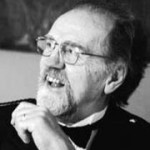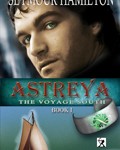 “How does my imagination work ?”
“How does my imagination work ?”
Unpredictably.
I start with a place. But I can’t say “I’ll write a story set in Bermuda, or New York City or Mars.” It’s not enough that I have been there, as in the case of the first two, and it’s not enough that I could imagine a place such as Mars. I have to start with a place I know so well that it is far more than just a snapshot loaded onto Facebook. I have to be able to walk around it in my mind. In such a place, I know how the wind moves the clouds, what wildflowers grow there, how the pines smell after rain, where the tidal whirlpools are and how to sail around them.
Mysteriously, words can get me there, words that can do for me what the words “Once upon a time…” did when I was much, much younger.
The Astreya Trilogy begins with the words I wrote first:
Ancient round-shouldered mountains met the sea only a little south of where winter held the ocean ice-clad the whole year long. Along the coastline, where harbors were few and hard to find, jagged rocks combed the breakers grinding at shards of wood that might once have been ships.
Whenever I got lost and didn’t know where the story was going, I came back to those first two sentences, and read them out loud. They are my charm’d magic casements, opening on the foam of perilous seas. Through them I gain entry into Astreya’s world.
Such a place, and the right words as passport to it, take me where I can watch someone (not me) living out a story, which with luck, I can tell. Luck, because I have to believe in what I’m writing. If I run out of luck and stop believing, it takes a hellofa long time to get back, which is why it took damn near 40 years from first sentence of The Astreya Trilogy to the final word of the third volume.
The moment I start doubting where, what and who I’m writing about, I’m lost in darkest academic doubt and denial. I can take time out to remind myself that the wooden bumper-thing built into the side of a boat just a bit above the waterline is called the rubbing strake, but if I ask myself what the hell I’m doing writing about a fellow with a funny name who’s trying to find his birthright and destiny and avoid being killed by his uncle while at the same time getting back to the girl into whose eyes he looked when they first met… well, if I doubt any of that, I’m lost. Sometimes for years at a stretch.
You see, I’m a discovery writer. A pantser. No plan. I have to go where the story takes me. If I try too hard to make things happen, I end up having to throw stuff away. On one occasion, this amounted to more than 200 pages. This was because what they were about didn’t happen, because they were contrived.
Don’t think that I have no idea where I’m going. Astreya gets his father’s riddling notebook from his widowed mother in Chapter 1. Many, many pages later, just before book three ends, the riddle is unriddled. In between, I was wondering what it meant. I honestly did not know. But I knew that eventually I would.
Writing is a risky business for me, the more so because for so long I spent most of my life doing the absolute opposite of writing, which is studying and teaching literature, at which I sucked, because I enjoyed reading too much to do the steadily depressing analytical two-step (with buck-and-wing footnote) which is necessary to get published in what are pompously called “learned journals.”
By contrast, writing is such fun. When things go well, that is. And revising is fun, too, although it’s of a different kind.
Joss Whedon, a man I greatly admire, talks about the joy of creating a world, and also of the finicky business of choosing not just the words, but what kind of words, how they sound, how they feel, how they fit. For example, in Astreya’s world there are no meters, miles or inches. (I had to relent and allow depth of water to be measured in fathoms, because, well, it felt right.) Consequently, everything is measured in human terms: a handful, an arm’s length, a stride. Why? Because those words belonged there.
Careful editing of words keeps me within the enchanted place where the story happens. Because I can hear characters talking in my head, I have to find ways of getting their styles and accents onto the page. Roaring Jack talks like a Newfoundlander in that distinctive variant of Irish which is separated from Ireland by 300 years and the Atlantic Ocean. So Jack says things like “Oi niver, niver want to hear yer say that agin, b’y.” Gar, the itinerant painter with an obscure past, lapses into nautical speech when things get exciting. Astreya’s wicked uncle oscillates between sounding like a career bureaucrat with control issues and a whispering psychopath improving his advanced skills in torture.
Getting the words right and keeping them right over the course of the story makes me concentrate more than I have ever done in my life. I lose consciousness of wherever I may be keyboarding on my dented and trusty MacBook Pro. I disappear too, so that there is only the story unfolding onto the page, to be burnished by re-reading (mostly out loud) and tinkered with until it’s right.
When it’s all over and I hold the book in my hand, it’s something that I did, but it isn’t mine any more. It’s a world waiting for others to enter. My hope is that those who go there will take the time to linger and enjoy.
Seymour Hamilton’s lyrical epic Astreya Series is published by Fireship Press, the publisher of my Patricia MacPherson Nautical Adventures. To appreciate the author’s lush language and imaginative setting, Listen to the author read from Astreya.
The Voyage South (book I), The Men of the Sea (book II) and The Wanderer’s Curse (book III) are available on-line and at your favorite independent bookstore (ask them to order for you.)
I would love to see this series made into a movie.
